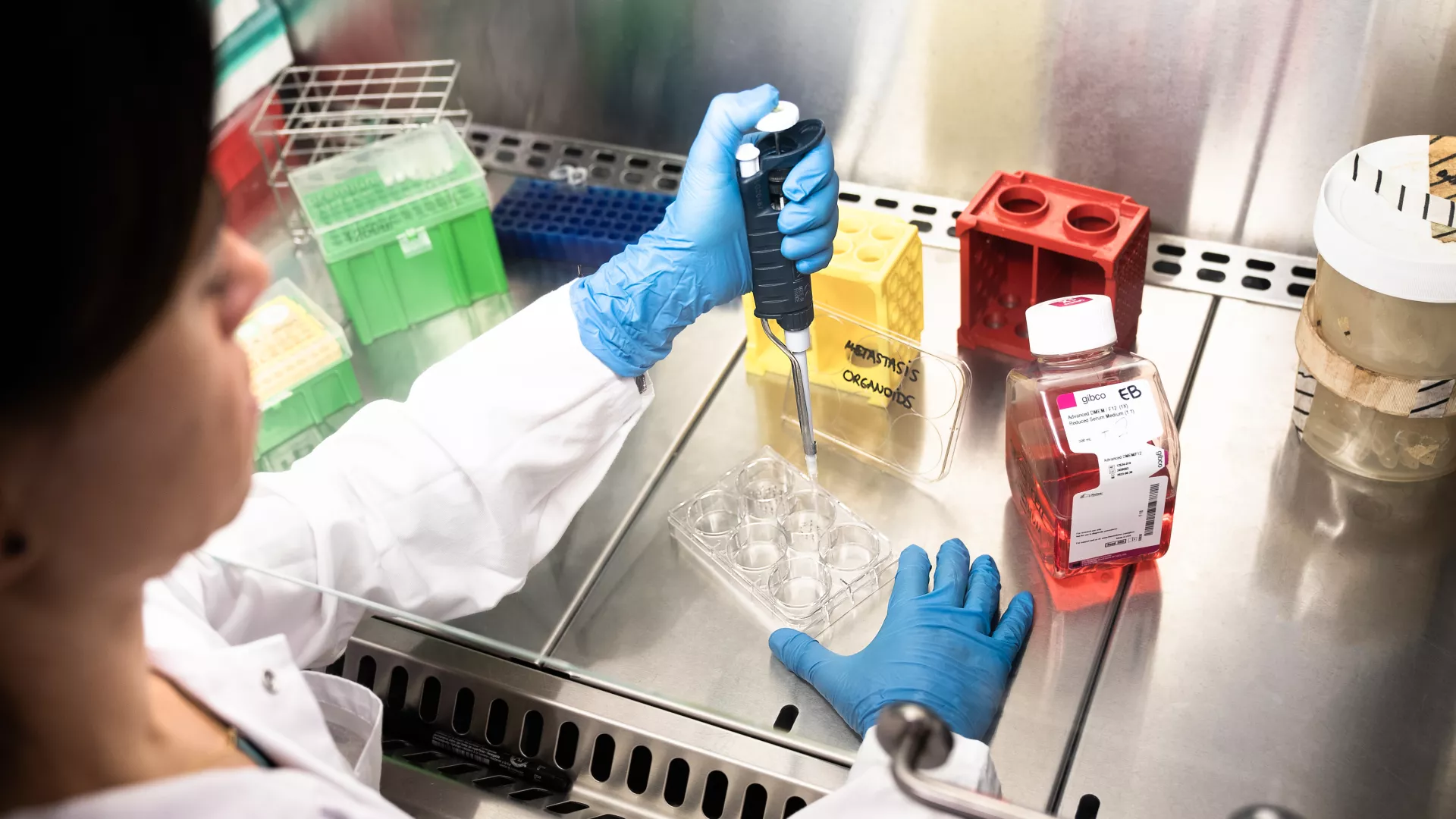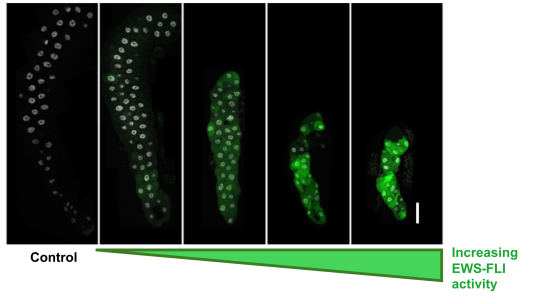Images
Participants







Contact

- Researchers from IRB Barcelona and Sant Joan de Déu Children's Hospital have successfully developed Drosophila models expressing the EWS-FLI oncogene at varying levels, overcoming previous toxicity challenges and enabling detailed study of Ewing sarcoma's oncogenic pathways.
- The work, published in Open Biology, holds promise for accelerating the development of targeted therapies for Ewing sarcoma.
A groundbreaking study utilizing Drosophila melanogaster as a model organism has shed new light on Ewing sarcoma, the second most common paediatric bone cancer.
This research, recently published in Open Biology, represents a significant step forward in understanding the complex dynamics of this aggressive malignancy.
Ewing sarcoma, a cancer that arises in bone or soft tissue, has long posed a challenge to researchers due to the limitations of existing animal models. The primary obstacle has been the extreme toxicity of EWS-FLI, the oncogene driving the disease.
This toxicity typically results in cell death when EWS-FLI is expressed, making it difficult to establish viable research models.
In response to this challenge, a collaborative effort between researchers from Dr. Cayetano González’s team at IRB Barcelona and Dr. Jaume Mora, at the Sant Joan de Déu Children's Hospital in Barcelona, focused on developing a Drosophila model for Ewing sarcoma.
This collaboration led to the discovery of a mutant variant of the human oncogene that circumvented the toxicity issue and made it possible to show that the main oncogenic pathways triggered by EWS-FLI in human Ewing sarcoma cells can be realistically reproduced in genetically engineered fly models (Molnar et. al., 2020). However, the quest for a Drosophila study model based on unmodified EWS-FLI expression remained open.
"Ewing sarcoma happens to be the second most common paediatric bone cancer, and there's no specific treatment for this disease as of yet. This is what motivates a lot of the research effort into developing an animal model that will allow studying the disease.", states Serena Mahnoor, PhD student at IRB Barcelona and first author of the study.
In their new study, through innovative strategies, the researchers have met this challenge and succeeded at generating a series of fly models that express EWS-FLI at varying levels, providing a nuanced tool for studying the oncogene's effects.
This breakthrough has allowed researchers to investigate the relationship between EWS-FLI protein levels and its key functions. Notably, they discovered that different functions of EWS-FLI exhibit distinct kinetics relative to protein concentration.
This finding aligns with observations from human Ewing sarcoma tumours, where EWS-FLI levels are known to vary significantly between cells within the same tumour, leading to diverse cellular responses.
The development of these Drosophila models offers a valuable platform for studying the consequences of varying EWS-FLI levels, mirroring the heterogeneity observed in human tumours. This research tool has the potential to accelerate the search for specific therapies, addressing a critical need in Ewing sarcoma treatment.
Currently, the standard treatment for Ewing sarcoma is limited to surgery, radiotherapy, and chemotherapy. The lack of targeted therapies, coupled with poor long-term survival rates for patients with metastatic and relapsed disease, underscores the urgency of this research.
As this Drosophila model continues to be refined and studied, it may provide crucial insights into the molecular mechanisms underlying Ewing sarcoma progression as well as new avenues for drug screening in a living organism.
This work has been supported by the Spanish Ministry of Science and Innovation, the Spanish National Research Agency Agencia Estatal de Investigación, and a grant supported by funds from the European Union's Horizon 2020 Research and Innovation Programme.
Reference article:
Human EWS-FLI protein levels and neomorphic functions show a complex, function-specific dose–response relationship in Drosophila.
Serena Mahnoor, Cristina Molnar, Diego Velázquez, Jose Reina, Salud Llamazares, Jan Peter Heinen, Jaume Mora and Cayetano Gonzalez.
Open Biology.
About IRB Barcelona
The Institute for Research in Biomedicine (IRB Barcelona) pursues a society free of disease. To this end, it conducts multidisciplinary research of excellence to cure cancer and other diseases linked to ageing. It establishes technology transfer agreements with the pharmaceutical industry and major hospitals to bring research results closer to society, and organises a range of science outreach activities to engage the public in an open dialogue. IRB Barcelona is an international centre that hosts 400 researchers and more than 30 nationalities. Recognised as a Severo Ochoa Centre of Excellence since 2011, IRB Barcelona is a CERCA centre and member of the Barcelona Institute of Science and Technology (BIST).




